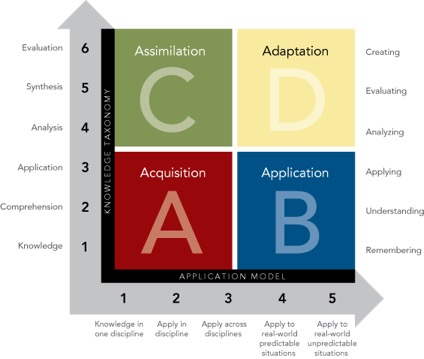Think Iterate Act
North Texas Technology and Curriculum Conference
Sponsored by Denton ISD
Last week I attended #TIA17. Wow what a great conference for learning about technology and how others are using the tech tools with their teaching. The keynote speakers this year were awesome - Dave Burgess the author of Teach Like a Pirate and Eric Sheninger the Senior Fellow and Thought Leader on Digital Leadership with the International Center for Leadership in Education.
The key points I took away from Dave Burgess were:
- Make Learning a personal experience.
- Draw students into your lessons by using "Hooks" like props, storytelling, images, etc.
- Let kids see the real you! Make engagement personal and be passionate in your teaching.
The key points I took away from Eric Sheninger were:
- Leaders do not ask others to do something unless they are willing to do it themselves.
- Change happens in the classroom so campus leaders need to support and guide teachers in the classroom.
- If we do not get instructional design right then technology will just speed up failure.
- Think about the learning space - change it to meet the learners needs.
- Focus on the "What if..." not the "Yeah but..."
- Build relationships and communicate with students, parents, administrators, stockholders, etc. in the way that they need you to - such as social media, email, phone, webpages. etc...
- Tell and share your story.
I attended 2 days of break out sessions. I can not share everything I learned so I am going to share my top 5.
- Be a Rock Star Librarian and Digital Tools for Student Inquiry - Presented by Nancy Jo Lambert. Student achievement is the #1 point of the library. Invite teachers to come to the librarian every time they are going to use information so you can help them use quality resources. MackinVia is a free resource to use when making pathfinders and gathering resources for classes to use during inquiry projects. Canva is a great resource for making posters, fliers, etc... for the library. A great tip when creating accounts for your library - create a gmail account for the library and link everything to that. So if and when you move to another library the next librarian has access to the social media accounts and other resources.
- If you Give a Kindergartner a Chromebook - Presented by Jamie Morgan. Chromebooks can be used with kindergartners and students who can not read and write. Okay Google is a voice command tool that can be turned on so students can be able to search and type with voice commands. Google Tone can help the teacher send out websites to multiple Chromebooks at one time. Screencastify can be used for verbal accommodations during assessments.
- Creative Storytelling with Adobe Spark - Presented by Claudio Zavala Jr., a free app that can be used on computer, tablets or phones. Adobe Spark - Post is for graphic design, Page is for webpages, and Video. I created a fun graphic illustrating a robot I made in the makerspace at the conference.
- What's hAPPening in Google - Presented by Sara Reed and Lynda Wright, provided lots of google extensions - Move It - an extension that will pop-up at time intervals and ask students to do gross motor tasks, Crafty Text - put a quick message on the screen over a webpage in big bold writing, Tab Scissors and Tab Glue - split the screen and glue it in place, Tab Saver - save tabs for use later, Extensify - can enable and disable extensions with a click, One Tab - helps conserve space in tab area, it combines all open tabs into one list.
- Matching Picture Books and Maker Activities - Presented by Jamie Jensen. I love the idea of matching a book to the makerspaces in the library. Jamie Jensen has a lot of different books and makerspace ideas paired up in her presentation. (I linked her presentation to the title of her session check it out.) One of my favorite activities was the book The Blobfish Book by Jessica Olien paired with a green screen. Create a green screen using a pizza box and light green felt. Then create the Blobfish with a purple balloon. Then students can retell and act out the story on video. Then use a green screen app to upload the video onto an ocean background.








